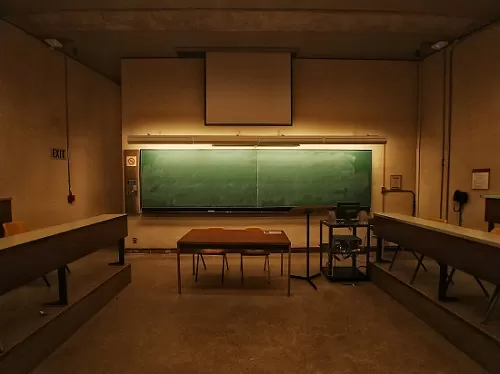Economic cycles do not come with time but with circumstances. The clamor around the shortage of teachers is a piece of unpleasant news, baffling the district superintendents, the researchers, the schools, and now everyone. It has become a frequent media highlight.
The concern is less about how this teacher shortage will be met and how we want to deal with it and more about- does it even exist, or is it an inflated matter?
There are two stories. On the one hand, teacher shortage is seeing soaring attention, and on the other hand, there are talks about throwing off these claims. Whom do we believe? The data or the teachers?
Long story short, the teachers feel dejected, drained, and disrespected.
Data tells that pandemic has given them a hard time to teachers and they feel burned out. This feeling is exacerbated by lesser salaries. And to top it all, these came with the politicization of the profession. Teachers feel powerless over what and how they can teach. They cannot exercise self-discretion on teaching topics around sex education or SEL.
What is Happening?
A survey tells us that the job satisfaction of teachers in 2022 is 16 percentage points less than what it was in 2021. It also speaks about how more than 70 percent of educators are unhappy with their current working conditions.

Source:2022, Educator Shortage Research, by Emma White Research for MEA
Many educators are not willing to continue to work in the same job since schools have reopened. The pandemic has given big jolts to many of them, such as having to work harder through online classes, lesser pay, sickness, mental health concerns, and so on.
Governments in different states are taking measures to manage this shortage. For example, in Florida, the Education Department allowed military veterans and their spouses to teach in schools even if they lack a degree.
The Arizona Government has asked college students to fill in as teachers in schools in response to dealing with teacher shortages in their schools.
Is There a Real Shortage?
Although there is a large hue and cry about teacher shortage, there is no definite national data that says so. There are reports by independent research organizations or state data but nothing in national entirety.
RAND Corporation’s report tells a different story. They say that there is no shortage. In fact, more than half of the districts have expanded their teaching and non-teaching positions to numbers that are higher than the pre-pandemic ones. The demand for substitute teachers is high, and on average, districts have increased the daily pay of a substitute teacher by 6 percent. All this comes in light of the federal stimulus to the schools.

Source: 2022, Educator Shortage Research, by Emma White Research for MEA
The US Education Department discovered national data from 800 schools and concluded that on average, one school had 3 unfilled teachers’ positions. They believe that the shortage is not because of teachers leaving or planning to leave. It seems exacerbated because hiring is a little slow. Some researchers say that the word ‘shortage’ is also a misnomer as the quitting rate is not higher than what it was in previous years.
Addressing Teachers’ Issues

The shortage is not uniform in its sense. There is a shortage but it is in specific areas, such as teachers of special education. Teachers are burned-out and it is real. It is true that doctors were encouraged and applauded during the pandemic for their long hours and dog-tiring service at the hospitals, but we certainly cannot say that our teachers haven’t done enough.
The research results by Gallup Panel Workforce Study, 2022 tell that workers in K-12 feel more burned-out compared to workers in other professions. In the K-12 workforce, the teachers were found to be the most fatigued.

Tell that workers in K-12 feel more burned-out compared to workers in other professions
There are mental health challenges for teachers in schools as well. They have to finish the curriculum in time, cannot teach certain subjects, and lack the power to introduce changes to curriculums.
The above illustration shows that 44% of K-12 workers feel burned out, in far contrast to 30% of workers in other jobs.
All this burnout and then the profession is also low paid. It is affecting their lifestyles. Educators who teach for the love of education and because they have a passion for teaching are leaving or at least planning to leave because of the disrespectful conditions around their work environment and less pay which does not correspond to their hard work and living expenses.
Parents are taking their kids out of school and planning to homeschool them. This came into the picture due to the concerns raised over the school curriculum. Parents see the curriculum as political and going against their cultural basics and history.
The White House
Recently, the US government held a meeting to discuss the challenges faced by the K-12 workers. The first lady is an educator and was a part of the panel that was discussing the issues around teachers. Well, it is a good start.
The Biden administration has encouraged schools to use funds from the American Rescue Plan to give higher compensation to the teachers and welcomed platforms that can help in hiring school staff, including nurses and social workers. The government has given more stimulus to hiring and increasing the pay of the teachers.
The government is seeking support from private recruiting platforms like Handshake and Indeed to fill these positions for the schools’ staff.
We hope this works and brings some positivity to the school education system and the teachers. The education system is still dealing with the challenges thrown by the pandemic, and just like all times, this too shall pass. The government, the schools, and district leaders can work in tandem to mend what is broken in the best interests of the children and society as a whole.














